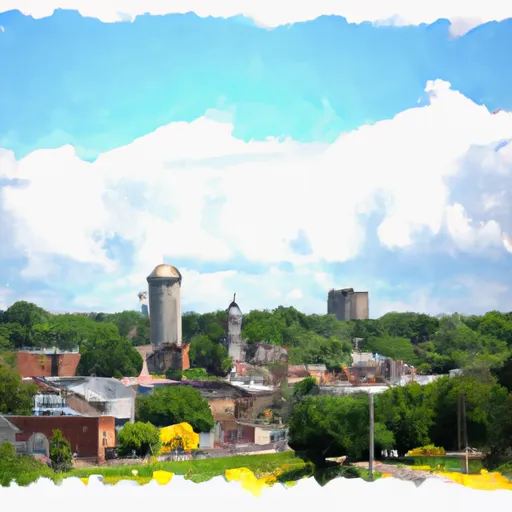°F
°F
mph
Windspeed
%
Humidity











Volga, Iowa is a small town situated in Clayton County, in the northeastern part of the state. The town experiences a humid continental climate, characterized by warm summers and cold winters. Average high temperatures range from the 80s°F (27-32°C) in summer to the 20s°F (-6 to -3°C) in winter. Precipitation is fairly evenly distributed throughout the year, with an average of 35 inches (890 mm) annually.
Hydrologically, Volga is located near the Turkey River, which flows just to the west of the town. The river provides an important water source for the region and supports various aquatic species. Additionally, the area is dotted with small creeks and streams, contributing to the overall hydrology.
Outdoor recreation opportunities in Volga are plentiful. The Turkey River and nearby water bodies offer fishing, boating, and canoeing opportunities. The surrounding landscape is ideal for hiking, camping, and wildlife observation. The town also features parks and green spaces, providing opportunities for picnicking, sports activities, and leisurely walks. Overall, Volga, Iowa offers a picturesque environment for outdoor enthusiasts to explore and appreciate nature's beauty.
Weather Forecast
Volga receives approximately 894mm of rain per year, with humidity levels near 83% and air temperatures averaging around 8°C. Volga has a plant hardyness factor of 4, meaning plants and agriculture in this region thrive during a short period during spring and early summer. Most plants will die off during the colder winter months.
Regional Streamflow Levels
1,730
Cubic Feet Per Second
3,010
Cubic Feet Per Second
48,600
Cubic Feet Per Second
386
Cubic Feet Per Second
Nearby Camping
| Camping Area | Reservations | Toilets | Showers |
|---|---|---|---|
| Pulltite - Ozark National Scenic River | |||
| Ray Behrens | |||
| Alley Spring - Ozark National Scenic River | |||
| Akers | |||
| Frank Russell | |||
| Graham Cave State Park |



